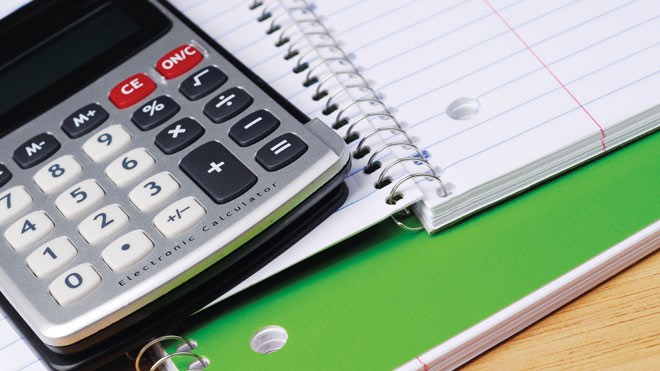School closures due to conronavirus have put parents in the challenging position of home-schooling their children.
In mathematics education programs for future math teachers, we often discuss the traditional classroom that those studying to become teachers are familiar with. We’re interested in how their own experiences as students can influence their teaching.
Traditional modes of instruction have emphasized that math is best learned through studying and memorizing alone, with the teacher demonstrating procedures and then checking students’ answers.
If parents grew up with this style of instruction, their ideal home-math classroom might look like strict scheduling, workbooks, a child working alone in silence and parents telling children how to solve problems. But if parents enforce this approach, there could be conflicts and maybe even some crying.
But parents, like future educators, can also learn from newer approaches. Here are some practical tips for a different form of home learning.
1. Talking about math
Gone are the days of students sitting quietly while the math teacher does all the talking at the chalkboard. Discussion is important in the mathematics classroom.
Parents should be explicit. Tell your child “we learn by sharing ideas and listening to each other.”
Model active listening skills. Show your child that you are listening by asking questions about what they said to clarify your understanding of their idea. Try saying “tell me more …” or asking “how do you know that?”
Try setting aside your own idea(s) so you can listen and build on their ideas. Instead of saying “yes, but …,” use “yes, and …” to help children feel that they’re not being judged and their ideas are important.
2. Attitude
Researchers have identified three underlying interconnected aspects of childrens’ relationships with math that impact how they engage with math: emotional disposition (“I like math”), perceived competence (“I am good at math”) and their vision of math: whether math is about problem solving and understanding or math is about memorization and regurgitation.
Parents can set a positive attitude for children by being mindful not to say things like “I don’t like math” or “I’m not a math person.” Your child might think they don’t have a chance because you didn’t pass on a math mind.
Academics have debunked common beliefs about the “math gene” and explain that there’s lots involved in being good at math. Celebrate the process and not just the final answer. Give high fives for sharing solution strategies, developing a plan to tackle the problem and for not giving up.
Make it clear that making mistakes is OK and can even be a good thing. Many highly successful people see mistakes as learning opportunities and an indication that learning is happening.
3. Working in partnership
A partnership is about working together and can include seeing the teacher as a learner and the student as a teacher. It isn’t about the teacher being “all-knowing” and making all the decisions.
Traditional math teaching, where the teacher assumes an authoritative role, is a major cause of math anxiety. Researchers have found that not all math homework help is beneficial. There is a difference between parents being controlling and being supportive.
With this in mind, wait for your child to ask for help. Try not to control everything. Focus on asking questions about their decisions that will help them figure out possible limitations and benefits of their decisions.
Let children fail. Failure can build confidence. Confidence can come from mastery; mastery can come from practice. Good practice includes analyzing what went wrong and what went right.
Don’t worry about being the expert. Be honest and say “I’m not sure. Let’s figure it out together.”
Start with what children already know. When your child is stuck, ask them to talk through what they are doing.
Take turns doing questions and talking about solution strategies.
Follow your child’s interests and ideas. Let them take the lead, even if you think your approach is better.
4. Basic math skills
If you grew up with traditional math instruction and haven’t thought about math since your school days, it might surprise you to learn that there are multiple ways to solve problems.
You could ask your child to share their way of solving the problem and also share your way.
For instance: What is 24 x 6?
It’s OK if you’re looking for a pencil to do this:
24
x 6
144
But what are some other ways you might you figure it out?
Multiply 20 x 6 to get 120. Now multiply 4 x 6 to get 24. Add the two figures: 120 + 24 = 144.
Another way would be to focus on 25 x 6 to get 150. Now subtract 6 and you’ve got 144.
In all math problems (including addition or subtraction), your child can use their fingers and you can too.
You can also look for opportunities to highlight math in daily activities.
One fun way is through baking. Arrange three rows of cookie dough with four cookies in each row. Ask how many cookies per batch or how many each family member will get if they share equally.
Being successful at mental math (like the arithmetic you do at the store) happens gradually over time.
Try focusing on basic math skills with your child for 10 minutes or less, every other day.
The takeaway
Think of quality over quantity.
If you want to support math learning at home based on math research: talk with your child, see learning as a partnership and make sure to celebrate their ideas. Your child may teach you something new.
We’d love to hear about how math has provoked families to slow down, have fun, go with the flow and connect.![]()
Tina Rapke, Associate Professor of Mathematics Education, York University, Canada and Cristina De Simone, Middle School Teacher. PhD Mathematics Education Student, York University, Canada
This article is republished from The Conversation under a Creative Commons license. Read the original article.
